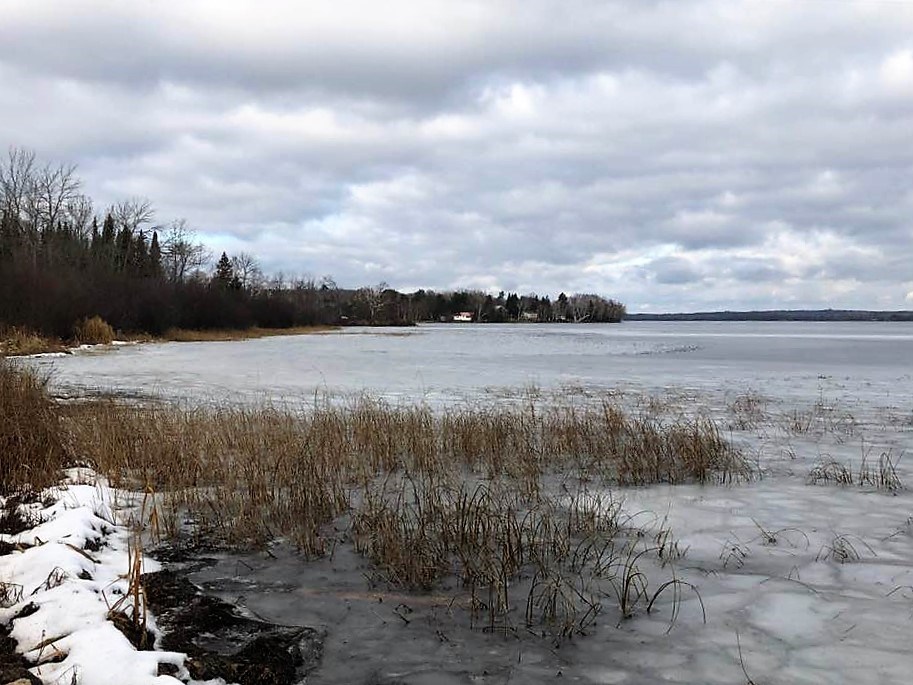East Ferris was given an in-depth look at Lake Nosbonsing’s phosphorous and algae bloom relationship last week with a comprehensive study backing up most of the development restrictions in place.
Neil Hutchinson, of Hutchinson Environmental Sciences Ltd., told council March 23, the blue-green algae blooms, which can generate toxic by-products and trigger public warnings, are likely a signal of “climate change” due to longer and warmer summers.
There have been eight in the past 13 years documented, Hutchinson said, which is “quite the record.”
When the ice comes off early, it triggers the “stratification” where the cold water sinks to the bottom and warm water stays on top until the temperature switches again, which is later in the fall.
This leads to the bottom water losing its oxygen, which leads to a chemical change.
“All the signs are there, in fact, that the lake loses its oxygen,” he said.
Hutchinson said certain types of algae, including that kind that lead to blue-green blooms, can actually sink themselves to feed off the phosphorous at the bottom and bring it back to the top.
More study is needed to find out specifically what kinds of algae are creating the toxic blooms, he said, with additional sampling also needed of the phosphorous collecting at the bottom of the lake’s three basins.
“Lots of lakes with no humans on them are seeing more algal bloom … that didn't before,” he said, including those with low nutrients. “And it's happening throughout our environment. People have documented that, I think, and a lot of the evidence points that was probably a climate change signal.
“The lakes are stratified earlier in the season,” Hutchinson explained. “The ice comes off earlier. The lake stays warmer in the fall. Now there's more time for this oxygen consumption to happen in the bottom and more time for phosphorus to be offloaded into the bottom.”
The detailed report is available as part of the March 23 agenda posted on the East Ferris website. Hutchinson’s presentation to council is available here while the full meeting is on the municipality's YouTube channel.
Greg Kirton, East Ferris planner, said they’ll be looking at how they can move forward based on the information, while noting Hutchinson said there is room for three more lot developments.
“He broke the lake into three basins,” Kirton said. “The Astorville Basin is everything in the bay near Astorville and the West basin in the rest of the lake area west of what is often referred to as Shield’s Point.
“The rest of the lake was labelled Main Basin,” he said, adding this isn’t always the same terminology local residents use.
Hutchinson, who said the relatively shallow lake produces a lot of warm-water fish because it’s nutrient-rich, told council each basin can be generally seen as separate bodies when it comes to development impacts.
Based on the phosphorous readings available for the Main Basin, he said, there’s actually room for several hundred lot developments if spaced apart enough and runoff is mediated.
Kirton said there’s no restrictions on such lot creation for that area of the lake, but there are for Astorville and West basins.
“Currently our development policies restrict lot creation in the Astorville and West basins,” he said, with no new septic installations allowed within 300 metres of the shoreline.
“The recommendations from the report were that existing restrictions be maintained in the Astorville Basin and existing permissions be maintained in the Main Basin,” he said.
Water quality west of Shield’s Point wouldn’t be threatened by adding a few more homes as long as it is done with vegetative buffers and proper septic system design, Hutchinson said.
“The change was in the West Basin, where the report concluded that three new lots could be accommodated with no threat to water quality,” Kirton explained. “The implementation of these development recommendations would have to be done in conjunction with NBMCA staff because they have their own policies about septic installations.”
Councillor Erika Lougheed said she hopes the study and its findings are just the start of a continuing focus on watershed protection as development continues.
Kirton said the report also recommended follow-up monitoring and data collection opportunities that would help create a more in-depth data set for the lake.
“We will work with the NBMCA on this as well,” he said.
Councillor Rick Champagne, who has a construction company that installs septic systems, said the cement tanks are in much better condition now than before. He said it’s likely because homeowners have realized how much damage Javex breaks down the cement (as well as kills the bacteria mass septic tanks require to process sewage).
Dave Dale is a Local Journalism Reporter with BayToday.ca. LJI is funded by the Government of Canada.



